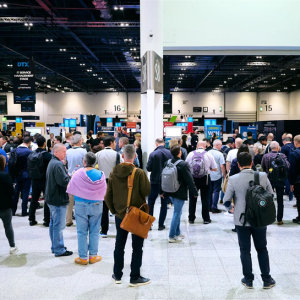
That global business is facing a staffing emergency is hardly a novel observation. But even in a world predicted by Korn Ferry to have 85 million job vacancies by the end of the decade, logistics and distribution companies are arguably suffering more than most.

Traditionally a labour-intensive sector, industry leaders are struggling to retain staff who can sometimes dismiss warehouse work as unrewarding. Certainly, this is an issue reflected in the numbers, with a 2022 report by InstaWork finding that 73% of warehouse operators can’t fill open positions.
That’s shadowed by deeper challenges, especially for the significant proportion of transport and logistics firms that have yet to implement a thoroughgoing digitalisation policy. With newer operators built around technological innovation, it can be hard for legacy players to retain staff that are keen on digitalisation, particularly if switching employers will make their job easier.
Yet by embracing a range of cutting-edge ERP and industry-specific digital solutions, and securing the right partner to help implement change, even traditional logistics firms can quickly bolster their positions – and take any staffing shortage in their stride.
Hyper-automated environments
Listen to Håkan Strömbeck and it soon becomes obvious that the staffing crisis across logistics and distribution is a multifaceted problem. The senior director of industry and solution strategy at Infor, Strömbeck pinpoints a range of difficulties, from the “general downturn” in the economy, through to the fact that packing boxes might leave potential workers “a bit bored”.
Nor do the hurdles end, Strömbeck continues, once staff have signed a contract of employment. “It takes some while to get them really efficient in their work,” he says, particularly if they’ve just been hired by a digitally challenged warehouse, without technologies like the barcode scanners or handheld computers to make their jobs simpler.
It makes sense, Strömbeck adds, that these frustrations can encourage workers to find new employment sooner rather than later. Once again, the statistics appear to support his argument here, with recent work by the US Bureau of Labor Statistics finding that the turnover rate in the warehouse industry was a staggering 49%.
The question of turnover is compounded by the rise of digital logistics. With giants like Amazon and DHL operating in what Strömbeck calls a “hyper-automated” environment, he suggests that the allure of streamlined distribution centres, especially for younger workers comfortable flexing their digital muscles, might be too strong to resist. For legacy operations eager to catch up, there’s the added complication of convincing workers to put down their clipboard and pick up a tablet.
The point, in short, is for logistics firms to make their operations faster and more efficient for workers and managers alike – without needing candidates to have degrees in data science to be successful. “It’s about bringing the right tools so that staff have the right information,” Strömbeck explains. “They should be guided by the tools – rather than the tools being things they need to feed with information. They should have help from the tools in their daily tasks in a consumable way.”
Beyond keeping staff happy and engaged, this approach can offer wider business benefits too. According to work by McKinsey, implementing AI-enabled supply chain management can help adopters cut their logistics costs by 15%.
A focus on usability in logistics
Given all this, it should come as no surprise that many logistics companies are digitalising at speed. Partnering with Infor is a popular solution across the industry, with the ERP giant providing a range of options spanning local warehouse management to international planning and execution.
Whatever the solution, however, Strömbeck and his team always approach implementation with simplicity and elegance in mind, something he claims hasn’t always been true across the sector. “In general, we have underestimated usability,” he concedes. “We have focused a lot on integration – focused a lot on having the perfect processes – but not necessarily on having the right user experience.”
Understand the field and this preoccupation makes sense. In a sector with rapidity and efficiency as its watchwords – McKinsey reports 25% of fulfilment customers are willing to pay a premium for same-day delivery – there’s little sense in developing a platform that forces workers to waste time clicking through menus.
With that in mind, Infor’s logistics management offering is what Strömbeck calls “persona-based” – and fundamentally involves getting relevant tasks to the relevant worker as quickly and clearly as possible.
This priority on the employee experience is apparent in other areas of Infor’s logistics work too, not least when it comes to automation. Pushing back against the cliche that AI and similar works of technical wizardry are merely there to cut staffing numbers, Strömbeck says that innovations like machine learning can actually give employees a much-needed boost. As he puts it: “This kind of digital assistant is not replacing you – but actually helping you perform your work.”
Once more, a careful examination of Infor’s offering suggests he has a point, with the company’s collection of logistics platforms not only giving workers an indication of what tasks they need to complete, but also reminders and hints of what could come next. To explain how this works in practice, Strömbeck borrows the example of Spotify. “If you did this,” he says, mimicking the popular music streaming service, “you will probably do this.”
A system this complex must naturally rely on a deep well of data collection and analysis, a fact that’s bound to offer insights to managers even as employees are aided too.
In Strömbeck’s telling, working with Infor could provide information on everything from staffing bottlenecks to efficiency changes over time – both factors that help inform hiring decisions as companies continue to grapple with the continued impact of staff shortages. “It’s a way of utilising your employees in a better way,” Strömbeck summarises.
It’s a sentiment that the employees themselves would doubtless agree with.








